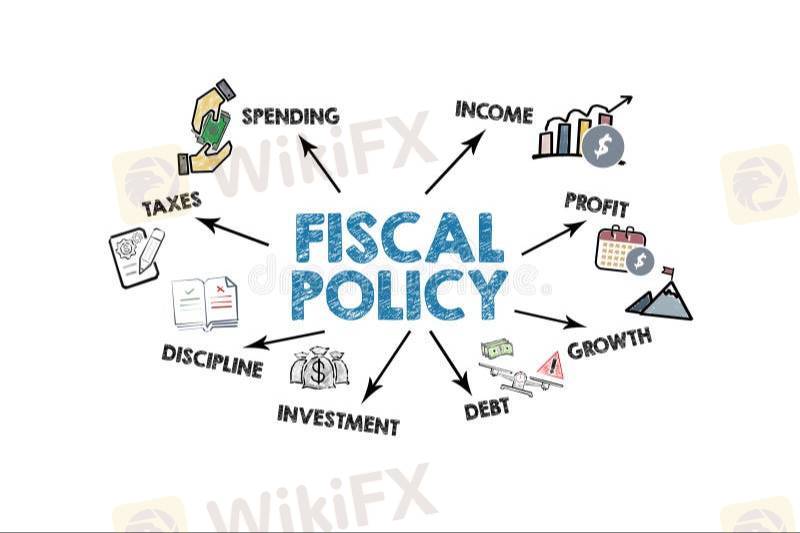
2025-02-11 23:30
IndustryFISCAL POLICY
Fiscal Policy: Steering the Economic Ship
Fiscal policy is the use of government spending and taxation to influence a nation's economy. It's a powerful tool wielded by policymakers to address macroeconomic challenges like recessions, inflation, and unemployment, and to promote economic growth and stability. Think of it as the government adjusting the sails and rudder of a ship to navigate the economic seas.
Key Components:
Government Spending:This encompasses expenditures on public services like education, healthcare, infrastructure, defense, and social welfare programs. Increasing spending can stimulate demand during economic downturns, while decreasing it can help curb inflation.
Taxation:Governments levy taxes on individuals and businesses to generate revenue. Tax cuts can boost disposable income and encourage spending, while tax increases can help control inflation and reduce budget deficits.
Types of Fiscal Policy:
Expansionary Fiscal Policy: Used to stimulate the economy during a recession or slowdown. This involves increasing government spending and/or decreasing taxes, leading to increased aggregate demand and economic activity. The goal is to boost employment and output.
Contractionary Fiscal Policy: Employed to cool down an overheated economy experiencing high inflation. This involves decreasing government spending and/or increasing taxes, reducing aggregate demand and curbing inflationary pressures.
Objectives of Fiscal Policy:
Economic Growth: Promoting sustainable long-term economic expansion by investing in infrastructure, education, and technology.
Price Stability: Controlling inflation to maintain the purchasing power of money.
Full Employment:Reducing unemployment to its natural rate, ensuring that resources are fully utilized.
Income Distribution: Addressing income inequality through progressive taxation and social welfare programs.
Challenges and Limitations:
Time Lags: Fiscal policy measures can take time to implement and for their effects to be felt, making it challenging to respond quickly to economic changes.
Crowding Out: Increased government borrowing to finance spending can lead to higher interest rates, potentially crowding out private investment.
Political Constraints: Fiscal policy decisions are often influenced by political considerations, which can hinder effective policymaking.
Debt Accumulation: Persistent use of expansionary fiscal policy can lead to unsustainable levels of government debt.
Fiscal policy is a crucial instrument for managing the economy. While it faces limitations and challenges, it remains a vital tool for policymakers seeking to achieve macroeconomic stability, promote economic growth, and improve the well-being of their citizens. Effective fiscal policy requires careful consideration of economic conditions, potential trade-offs, and long-term sustainability.
#firstdealoftheyearchewAstylz#
Like 0

Temi322
Broker
Hot content
Industry
Event-A comment a day,Keep rewards worthy up to$27
Industry
Nigeria Event Giveaway-Win₦5000 Mobilephone Credit
Industry
Nigeria Event Giveaway-Win ₦2500 MobilePhoneCredit
Industry
South Africa Event-Come&Win 240ZAR Phone Credit
Industry
Nigeria Event-Discuss Forex&Win2500NGN PhoneCredit
Industry
[Nigeria Event]Discuss&win 2500 Naira Phone Credit
Forum category

Platform

Exhibition

Agent

Recruitment

EA

Industry

Market

Index
FISCAL POLICY
 Hong Kong | 2025-02-11 23:30
Hong Kong | 2025-02-11 23:30 Fiscal Policy: Steering the Economic Ship
Fiscal policy is the use of government spending and taxation to influence a nation's economy. It's a powerful tool wielded by policymakers to address macroeconomic challenges like recessions, inflation, and unemployment, and to promote economic growth and stability. Think of it as the government adjusting the sails and rudder of a ship to navigate the economic seas.
Key Components:
Government Spending:This encompasses expenditures on public services like education, healthcare, infrastructure, defense, and social welfare programs. Increasing spending can stimulate demand during economic downturns, while decreasing it can help curb inflation.
Taxation:Governments levy taxes on individuals and businesses to generate revenue. Tax cuts can boost disposable income and encourage spending, while tax increases can help control inflation and reduce budget deficits.
Types of Fiscal Policy:
Expansionary Fiscal Policy: Used to stimulate the economy during a recession or slowdown. This involves increasing government spending and/or decreasing taxes, leading to increased aggregate demand and economic activity. The goal is to boost employment and output.
Contractionary Fiscal Policy: Employed to cool down an overheated economy experiencing high inflation. This involves decreasing government spending and/or increasing taxes, reducing aggregate demand and curbing inflationary pressures.
Objectives of Fiscal Policy:
Economic Growth: Promoting sustainable long-term economic expansion by investing in infrastructure, education, and technology.
Price Stability: Controlling inflation to maintain the purchasing power of money.
Full Employment:Reducing unemployment to its natural rate, ensuring that resources are fully utilized.
Income Distribution: Addressing income inequality through progressive taxation and social welfare programs.
Challenges and Limitations:
Time Lags: Fiscal policy measures can take time to implement and for their effects to be felt, making it challenging to respond quickly to economic changes.
Crowding Out: Increased government borrowing to finance spending can lead to higher interest rates, potentially crowding out private investment.
Political Constraints: Fiscal policy decisions are often influenced by political considerations, which can hinder effective policymaking.
Debt Accumulation: Persistent use of expansionary fiscal policy can lead to unsustainable levels of government debt.
Fiscal policy is a crucial instrument for managing the economy. While it faces limitations and challenges, it remains a vital tool for policymakers seeking to achieve macroeconomic stability, promote economic growth, and improve the well-being of their citizens. Effective fiscal policy requires careful consideration of economic conditions, potential trade-offs, and long-term sustainability.
#firstdealoftheyearchewAstylz#
Like 0
I want to comment, too
Submit
0Comments

There is no comment yet. Make the first one.

Submit
There is no comment yet. Make the first one.